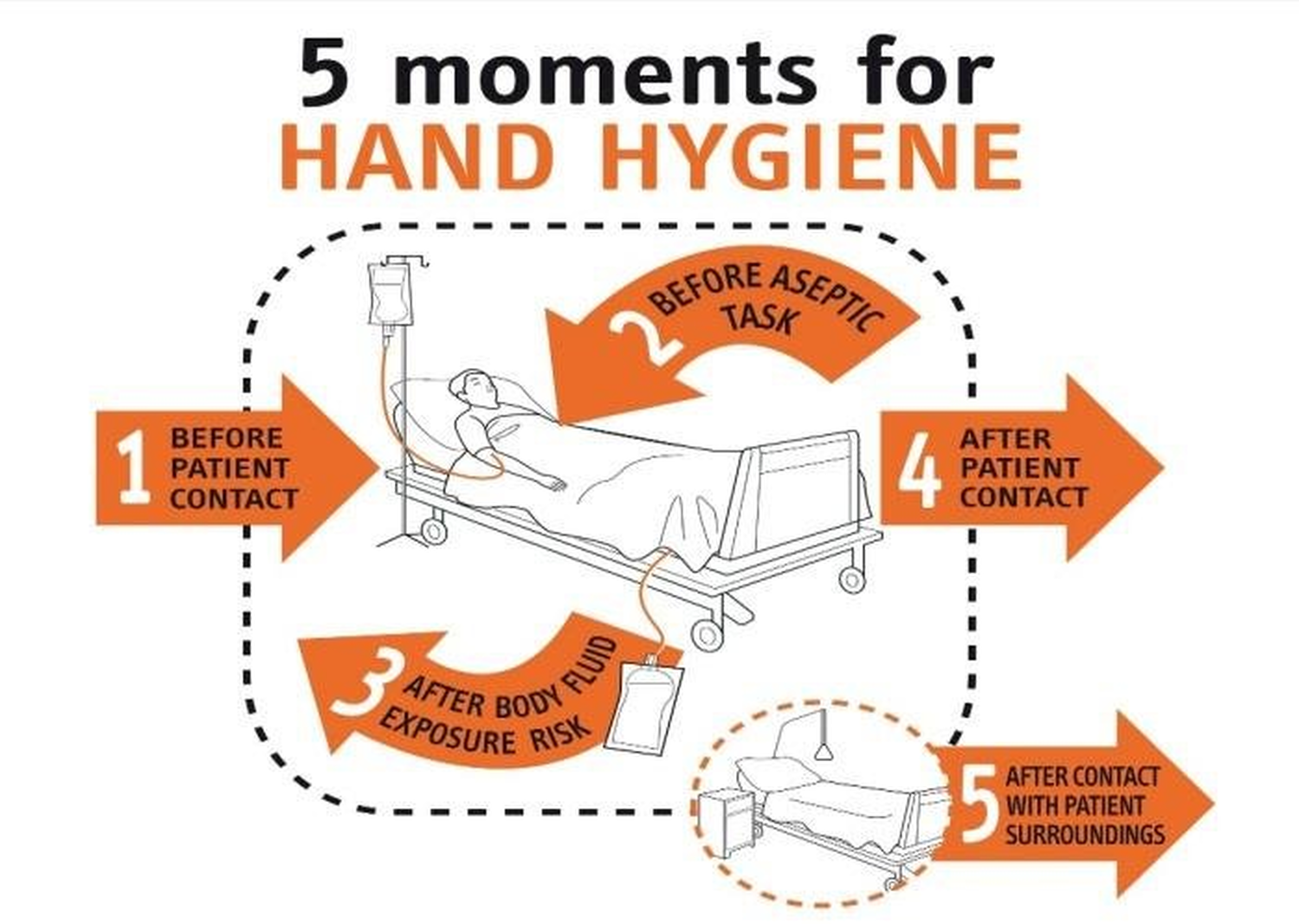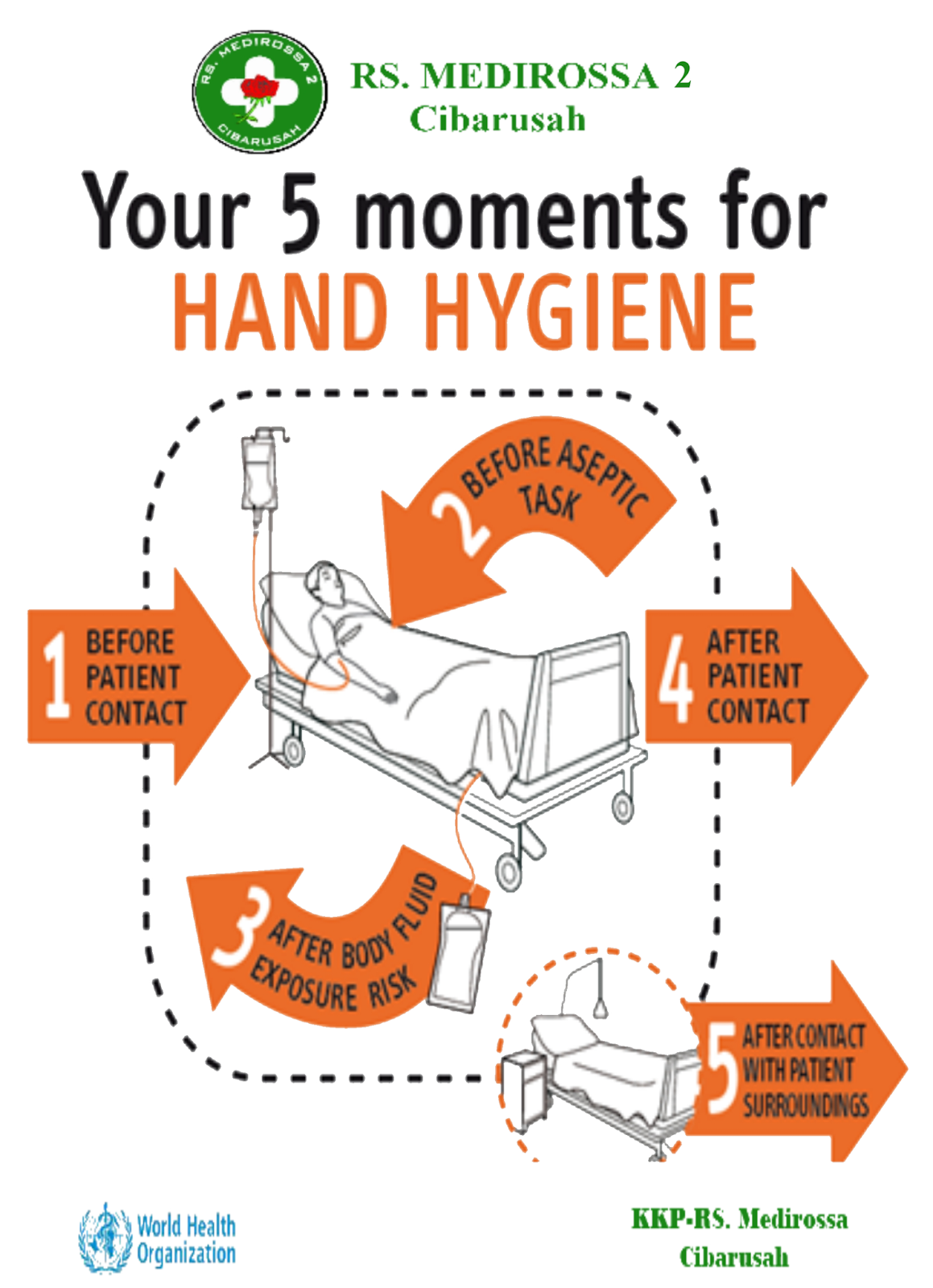

Hand hygiene monitoring capabilities have improved significantly in recent years, but no existing electronic hand hygiene surveillance system has the ability to assess compliance to the 5 moments during complex nursing care, according to a 2021 Frontiers in Digital Health article. (The 5 moments were only observable in 32.3% of episodes, and researchers concluded that measuring entry/exit hand hygiene compliance “appears more feasible.”) Since then, researchers have found that there is “ no strong scientific support” for the 5 moments regime “as a means of reducing health care associated infections.” Further, they note that attempts to comply with the 5 moments may decrease resource devotion to other infection control tactics that have been proven to reliably reduce infection rates, especially as research dating back to at least 2016 has noted that it’s nearly impossible to reliably measure compliance with each of the 5 moments. The remaining four moments are supported by strong theoretical rationale and some experimental, clinical, or epidemiological studies.Īt the time of their development, architects of the 5 moments noted that they “faced some fundamental difficulties which were mainly rooted in the lack of detailed scientific evidence on hand transmission and its implication in the aetiology of specific infectious outcomes.” Researchers and healthcare professionals also noticed that just one of the 5 moments – Moment #3, after contact with body fluids or excretions, mucous membranes, non-intact skin, or wound dressings – is strongly supported by well-designed scientific studies. Fewer than 5% recognized the fifth moment of hand hygiene. More than 60% of workers knew that hand hygiene was required prior to aseptic procedures, but the third moment – after body fluid exposure or risk of exposure – was only identified by about one-third of staff members. A 2018 study from Poland noted that more than 50% of healthcare workers could name the first moment – before touching a patient – and about half also successfully named the fourth moment (after touching a patient). Soon after the publication of the 5 moments, researchers noticed something: Most healthcare workers cannot reliably recall each of the 5 moments. And that actually may not matter all that much, as recent research suggests that tracking the 5 moments may not be the most effective method to reduce HAIs and improve patient outcomes. Spoiler alert: No existing electronic hand hygiene system can reliably and consistently measure staff compliance with the 5 moments.

Hospitals and healthcare organizations have invested significant resources into increasing staff adherence to the 5 moments, and many hospital leaders and infection prevention specialists are interested in electronic hand hygiene systems that can monitor staff compliance with the 5 moments. Since 2009, the 5 moments have been the dominant paradigm used to organize practice, policy, and research in relation to hand hygiene. WHO recommends that healthcare workers clean their hands at 5 essential moments: The World Health Organization (WHO) introduced the “ 5 moments of hand hygiene” in 2009 to highlight the importance of hand hygiene in preventing healthcare-associated infections (HAIs). Monitoring the 5 Moments of Hand Hygiene May Not Be Necessary By Madison Pittman


 0 kommentar(er)
0 kommentar(er)
